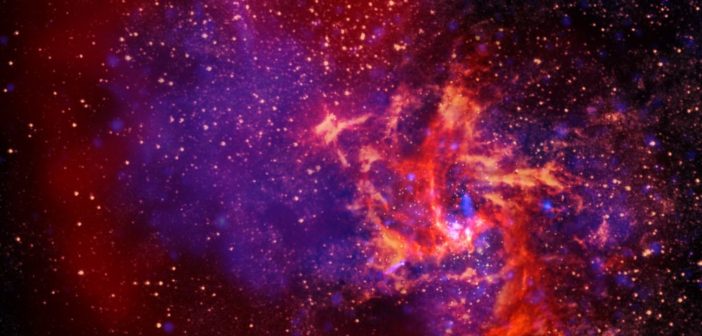Editor’s note: In these last two weeks of 2018, we’ll be looking at a few selections that we haven’t yet discussed on AAS Nova from among the most-downloaded papers published in AAS journals this year. The usual posting schedule will resume in January.
Detection of Intrinsic Source Structure at ~3 Schwarzschild Radii with Millimeter-VLBI Observations of SAGITTARIUS A*
Published May 2018
Main takeaway:
Radio observations of the supermassive black hole at the center of the Milky Way have reached their highest resolution yet, teasing out details of the structure of Sagittarius (Sgr) A* on a scale of just ~30 microarcseconds. This corresponds to a size of only ~3 times that of the black hole’s event horizon (the distance at which not even light can escape).
Why it’s interesting:
By observing our galaxy’s ~4-million-solar-mass black hole, Sgr A*, in unprecedented detail at radio wavelengths, astronomers hope to explore the structure of a supermassive black hole’s event horizon and learn about the physical processes that occur there. The observations presented in this study, led by Ru-Sen Lu (Max Planck Institute for Radio Astronomy, Germany; MIT Haystack Observatory), represent important advancement toward that goal, and they provide an tantalizing glimpse of Sgr A* that is thus far consistent with the picture of ring-like structure that is predicted for the black hole’s event horizon.
What we can expect ahead:

The participating telescopes of the Event Horizon Telescope (EHT) and the Global mm-VLBI Array (GMVA). A subset of these telescopes were used to make the observations in the Lu et al. 2018 study presented here. [ESO/O. Furtak]
Citation
Ru-Sen Lu et al 2018 ApJ 859 60. doi:10.3847/1538-4357/aabe2e

